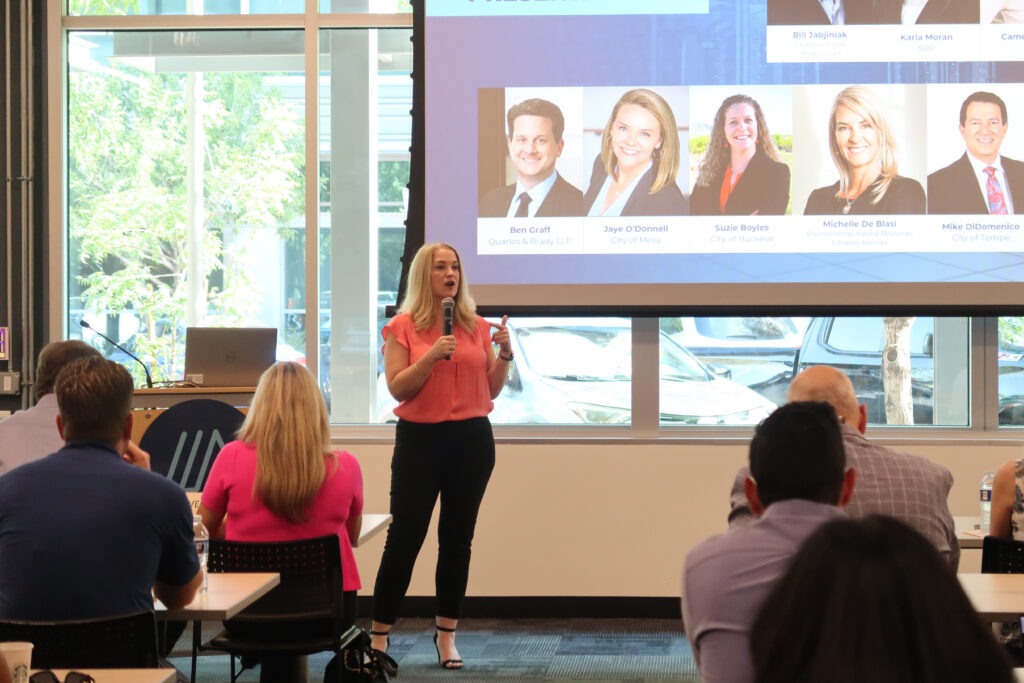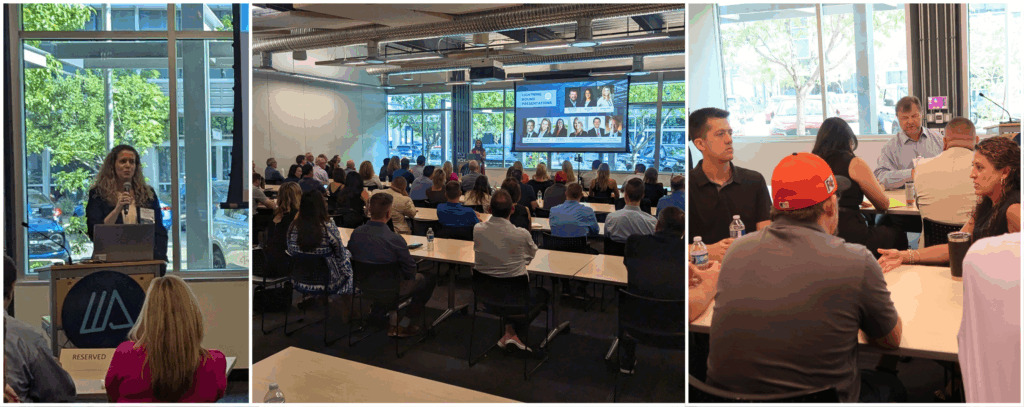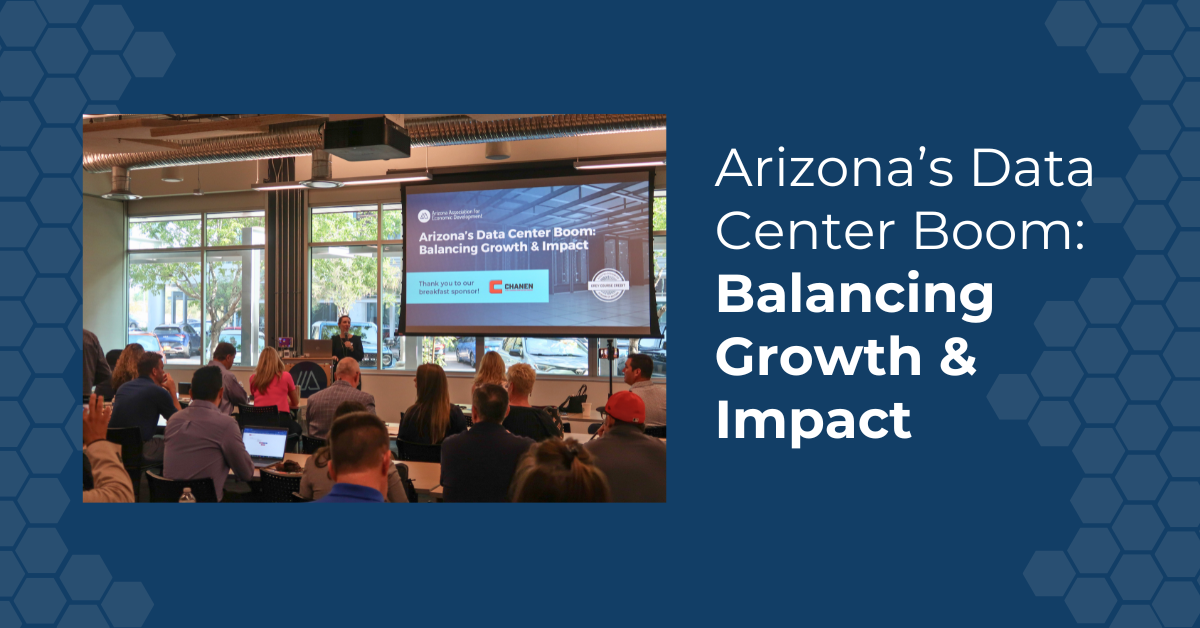If you’ve been following the news, you know that Arizona’s economy is undergoing a massive transformation. It’s no longer just a construction-based economy; it’s now a technology hub with booming demand for semiconductors, advanced manufacturing, and data centers.
This isn’t a coincidence—our daily lives drive it.
Think about every online purchase, digital classroom, and Google search. All of it requires immense data storage, which is why data centers, once small, nondescript buildings, have become massive campuses requiring hundreds of megawatts of power.
At a recent Arizona Association for Economic Development (AAED) roundtable, industry leaders, public-sector partners, and utility experts gathered to discuss this unprecedented growth and the critical need to balance it with our state’s resources. The discussion explored why companies choose Arizona, what local communities need to know about hosting these projects, and the complexities behind land, water, and energy use. Speakers offered a mix of enthusiasm, candid realism, and healthy debate about the region’s long-term approach.
Why is Arizona attractive for data center development?
Bill Jabjiniak, Senior Vice President, National Community/Government Relations for EdgeCore Digital Infrastructure, opened the session by explaining why data centers show up on more community prospect lists than ever before. Key factors include:
- Speed-to-market expectations for hyperscale and cloud users
- Predictable permitting
- Large, appropriately zoned parcels
- Clear state incentives
Additionally, Arizona appeals to data centers due to its climate and the lower risk of natural disasters such as earthquakes and hurricanes. This ensures more consistent and secure data operations than other parts of the U.S.
But what about the power needs?
 Utility providers offered some of the most technical — and most important — insights of the session. Large-scale users, such as data centers, often request 200–500 megawatts. To put that in perspective, one megawatt powers 160 Arizona homes or a 24/7 Super Walmart. Fulfilling these sizeable requests takes a significant investment in infrastructure, planning, and time. As Cameron Robb, Senior Economic Development Consultant for APS emphasized:
Utility providers offered some of the most technical — and most important — insights of the session. Large-scale users, such as data centers, often request 200–500 megawatts. To put that in perspective, one megawatt powers 160 Arizona homes or a 24/7 Super Walmart. Fulfilling these sizeable requests takes a significant investment in infrastructure, planning, and time. As Cameron Robb, Senior Economic Development Consultant for APS emphasized:
“Our (APS) peak service is 8,500 megawatts, as we’ve just seen. But in our pipeline, we have 16,000 megawatts. And everybody wants their power when? 12 to 18 months. We have to consider it took us 140 years to get to a place where we can serve 8,500 megawatts. We’ve got to figure out how to do this effectively.”
Utilities are working to manage this demand and ensure that the costs of new power generation are not passed on to residential customers. This means the data centers themselves are often asked to pay their fair share and, in some cases, even build their own power plants to ensure the state’s energy supply remains reliable and affordable for all.
Infrastructure planning isn’t happening in a vacuum, either. The grid is growing at a pace we haven’t seen in decades. Data center demand is one driver, but rapid population growth is another. Building or upgrading transmission and substations can take three to six years, making early communication with utilities essential. This point came up repeatedly as speakers urged communities to engage utilities early in site planning.
Pros and Cons of Data Center Development
The economic impact of this data center boom is multifaceted and comes not without its challenges. The goal of the event was to educate economic developers on the various arguments so that ultimately, each community can decide for itself. For example, the city of El Mirage, which has limited development options due to Luke Air Force Base, is doubling down on data centers. The city saw the arrival of a Microsoft data center not only bring high-tech jobs, but also spark the development of several other industries and millions of square feet of commercial space. Mesa, on the other hand — which currently houses 15 data centers — is looking to curb growth and ensure data centers don’t clash with residential areas through a recent ordinance limiting them into specific heavy industrial zones.
| BENEFITS | CHALLENGES |
|---|---|
|
|

The Takeaway: Strategic, Not Accidental, Development
The session made clear that data centers can be strong assets for Arizona — when carefully planned. With explosive digital demand and Greater Phoenix’s strategic advantages, interest isn’t slowing down. The real work lies in aligning community goals, utility capacity, and development expectations. For Arizona communities, the question isn’t whether data centers will continue to grow — but where, how, and under what conditions.

